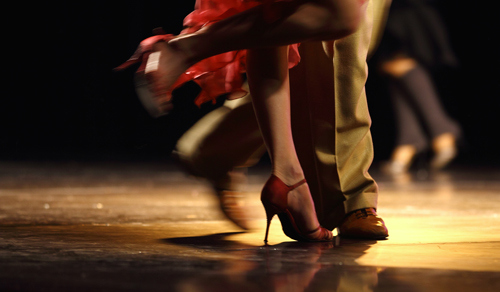The very things that make dancers well-suited to ballet can be their undoing. Physically, it’s inborn advantages like high arches, shallow hip sockets, and hyperextended knees; mentally, dancers can be undone by the very psychological traits that make it possible for them to succeed in ballet. Chief among these is perfectionism, an entirely necessary trait in a hypercompetitive field that demands near-impossible feats of the human body.
It is impossible to talk about ballet’s mental illness problem without talking about perfectionism, about the inevitable mental and emotional toll of an art form that requires its practitioners to spend hours in front of mirrors, comparing their fallible bodies to an unattainable ideal, and to each other.
In 2003, researchers at Duke University surveyed students about the campus culture, particularly as it was experienced by young women. What they found was that Duke women felt enormous pressure to be socially active—party, drink, date, and hook up—while also getting high grades, participating in extracurriculars, and being beautiful. They were supposed to do all of this without seeming to try at all, without showing the strain, without breaking a sweat. Failure was unacceptable, but so was the appearance of trying to succeed. The researchers dubbed this set of absurd and gendered expectations “effortless perfection.” (Stanford University has its own version, “Stanford duck syndrome,” in which the goal is the appearance of smooth, effortless gliding that’s only made possible by frantic, unseen paddling.)
In the mid-2000s, I was a student at a similarly elite university, no longer working toward a career as a dancer but still rehearsing several days a week with a campus dance company. When I heard the term “effortless perfection,” I recognized the concept instantly. This, I remember thinking, is just ballet. This is what we were taught in dance: to be athlete-strong but artist-unruffled. To work just as hard at concealing the work as we did at the work itself. The goal, as Edward Villella wrote about Gelsey Kirkland, a dancer whose mental illness eclipsed her dancing, was “steel-like legs that are doing the most fantastical feats while the upper body is soft and lovely as though nothing was going on underneath.”
It’s no surprise that attempts to achieve the perfect ballet line can damage the body as dancers try to make their hips and spines and feet and toes do things they were never designed to do. The ideal dancer, in addition to having impossible flexibility and strength, is impossible in other ways, too, and the unending effort to achieve that which cannot be attained damages the mind and spirit.
The relationship between a dancer and her body is a deeply intimate one. Many dancers began taking classes out of a childhood need to improve their coordination, balance, and strength, and those who stick with it are rewarded with all three of those things, along with a deep knowledge of and connection to how their body works. They enjoy exceptional proprioception, awareness of the body’s position and its place in space. By the time she’s dancing professionally, a dancer knows every muscle and has control over each tendon’s tiniest movements.




No comments:
Post a Comment